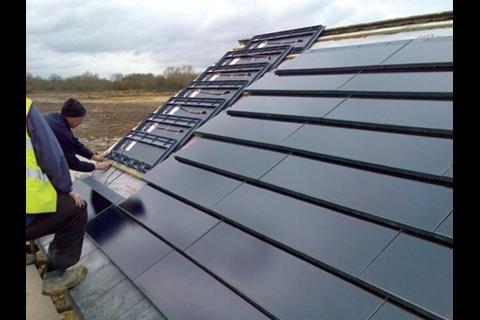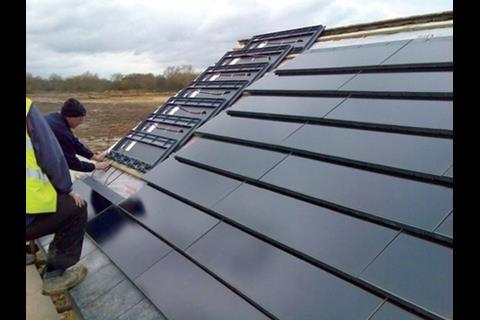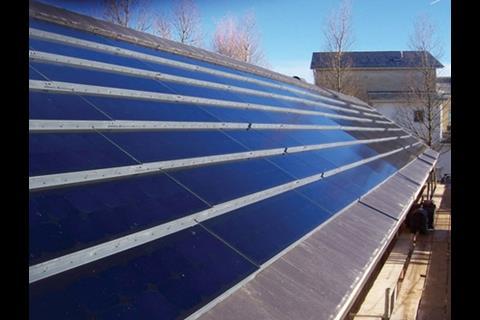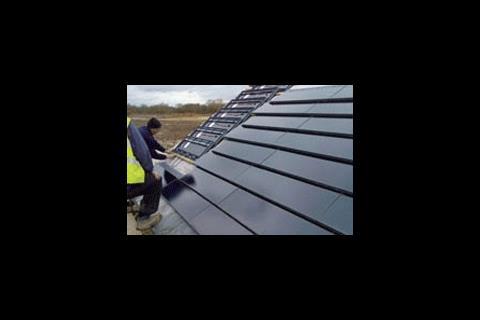The Bowller Group was established over 20 years ago and now employs 57 people across six sites in the south of England, reaching from Cambridge to Reading. As well as its specialist contracting division, the firm also includes Bowller Environmental Systems, which specialises in the installation of solar energy systems; Tanner and Hall, whose focus is interior fit-outs including suspended ceilings and acoustic solutions; and Bowller Roofing Supplies. Here, managing director Stephen Bowller explains more.
The Bowller Group has responded to market trends with a new environmental systems division specialising in roof-mounted renewables. Visit www.building.co.uk/technical
Our business is split into several distinct areas. On the supply and distribution side, we supply roofing products for flat and pitched roofs and provide timber products such as joists and roof trusses. On the contracting side, we tackle both new build and refurbishment projects, ranging from small individual clients to high-specification residential and commercial projects.
When we get involved in a project tends to depend on its nature. One of the biggest frustrations is not being brought on board early enough. Developers in particular often have an idea of how they want a scheme to look without giving enough thought to how it will be constructed and it can be very hard to meet their expectations. If they bring us on board early and include us in the design and specification process, a lot of the buildability issues can be ironed out.
As contractors, we have specialist knowledge on the heritage side, including random slating and clay peg tiling. One recent project we were involved with was the Lower Mill Estate residential development where we installed a range of Cotswold stone-effect roof tiles, natural slates and thatched roofing. The thatching was outsourced because it is so specialist. Although there is still a big demand for traditional roofing skills, finding the skilled labour to do it is becoming increasingly difficult. We train our own workforce.
The Building Regulations have had a big impact on heritage jobs over the last decade. When you are re-proofing you now need to bring it up to current standards, which can be a technical challenge and costly.
One of the biggest growth areas in recent years, partly driven by legislation, is the installation of roof-mounted renewables.
We saw this as a good business opportunity, which recently led to setting up our environmental systems division to supply and install complete solar thermal and PV systems. These can provide 50-70% of a property’s annual domestic hot water load. As most are roof mounted, and with our knowledge of roof tiling, it certainly makes the planning of installation more straightforward. With these types of project we get involved much earlier as we are designing the system ourselves.
The funding grants and tax incentives available to customers also drove us to become BRE and Low Carbon Building Programme-accredited installers, so we are competent in the plumbing and electrical skills necessary to install these systems.
Retrofit is the most challenging aspect of this area. With solar thermal installations the biggest issue is where to install the dual-coil hot water cylinder. With an unvented system you have some scope to locate the tank somewhere else in the building, but with a vented system the tank tends to have to go in the roof space, which can be a squeeze.
If there is one piece of advice I have for the rest of the construction team, it is that planning and communication are the key to a successful project.
The world according to …Stephen Bowller
My dream specification is…
A large project involving roof tiling and photovoltaics where we are involved in design at the early stage.
The product I swear by is…
The Redland Cambrian. It’s a really versatile product which looks good and has an impeccable service record. When it was introduced in the 1980s it really was an innovative product.
Not only that, but it is environmentally great as 60% of it is made from recycled waste slate.
The best recent innovation is…
Probably the hoisting facilities on site. When I started, it was carried up by manpower.
My specification nightmare is…
Something you know won’t work, but people insist you do it and then ask you why it’s not working!
The next big thing is …
Green roofing such as sedum on flat roofs in cities for new build and refurbishment.
Specifier 6 June 2008

Specifier 6 June 2008
- 1
- 2
 Currently
reading
Currently
reading
Bowller: Get the thermals out
- 4
- 5
- 6
- 7
- 8
- 9
- 10
- 11
- 12








































No comments yet